All about hippies
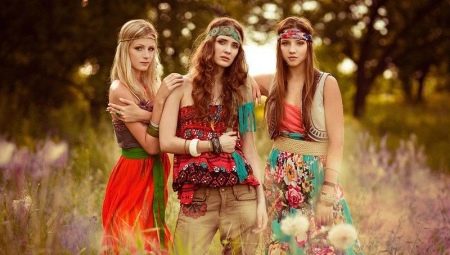
In the mid-60s of the last century, a new subculture arose in the United States, called the hippie. It was a kind of youth protest against the Vietnam War launched by the American authorities. The movement turned out to be so bright and distinctive that it forever left the memory of itself among all mankind. Adherents of hippies united in large groups to get away from the rules of life imposed by society. Over time, the fashion trend came to naught, but its traditions of philosophy, clothing, and interior style were preserved, which are still of interest to new generations.



Who are they?
In the period from 1964 to 1973, the United States unleashed the Vietnam War, but for the first time in history, citizens did not support the military doctrine imposed on them by the government. The confrontation between the authorities and the people resulted in an anti-war movement, which served as a starting point for the emergence of hippies. This newly emerged culture united progressive youth, whose philosophy of life was based on the principles of peacefulness and unity with nature. The subculture became a riot, which took place not with weapons in hand, but with flowers and smiles of peaceful people.
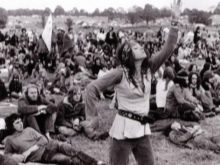

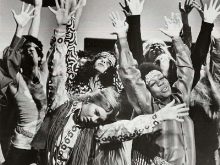
People who were engaged in the idea of promoting a peaceful life did not go unnoticed. Already in April 1964 on one of the US TV channels the host of the program called the word "hippie", using it in a derogatory sense, a group of young people with long hair, dressed in jeans and bright T-shirts, who openly protested against the conduct of military operations in Vietnam.
In English, the phrase "to be hip" means "to understand, to be in the subject." Over time, hip grew into a hippie.
Hippies are different from the hipsters who appeared in the USA in the 40s.The difference between the two subcultures is that the ideas of peace and love are important for hippies, and for hipsters - to be in trend, to be fashionable.



Ideology
The ideological principles of hippies are based on pacifism, which manifests itself in the refusal of violence and military service. At the very beginning of the formation of the subculture, its ideology was to end the Vietnam War., but then the philosophy of pacifism acquired a broader scale and resulted in a way of life that includes all spheres of human existence.


The idea of a hippie was not meant to build a society based on a hierarchical principle. - on the contrary, in this culture, each person was equal to another, the same person. It was a revolution in the minds of citizens who were accustomed to living in a world of submission. The ideas of peace and equality so captured the minds of young people that the movement quickly gained its popularity, and the number of its supporters grew rapidly.
Instead of material values and limited rights among the hippies, a person was offered an alternative in the form of freedom, creative expression and universal love.


The hippies did not think about tomorrow - they lived here today, and their slogan was "Make love, not war." People who joined the newfangled trend shared common interests with each other - they believed that love can be free, and no one needs war.
Hippies lived in communes, within which there was a certain set of rules. In some communes, in addition to pacifism, promiscuous sex life, drugs and alcohol were encouraged.



Symbolism
Members of the movement advocated naturalness and love for nature. Most of them believed that humanity needs to return to its origins and start living differently, merging with nature. The dove for many peoples of the world is the personification of peace. For pacifists, the peace sign was expressed in the form of a pigeon's foot, which left its imprint.
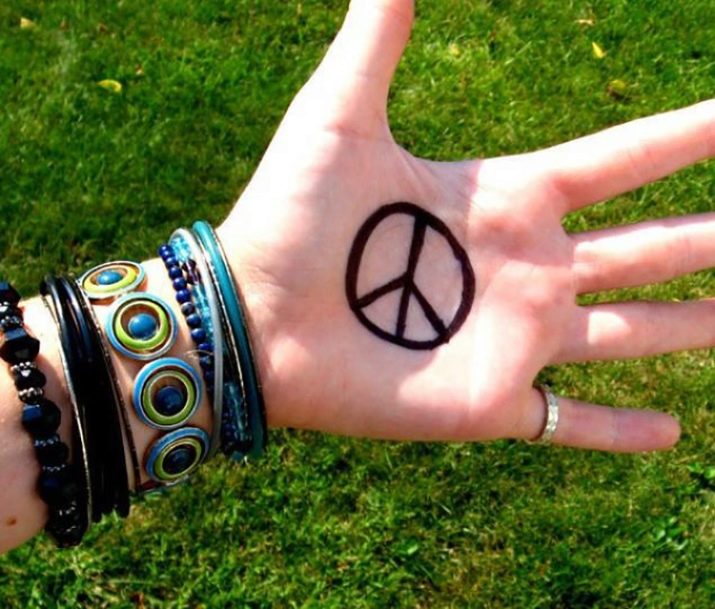
The attributes of pacifism are one of the main features of the hippie subculture. In addition to the "pacific" sign, hippies also used a number of other, characteristic only symbols, recognizable to this day.
- Flower - it is a symbol of wildlife and the desire for the sun. The hippies called themselves "flower children." During the demonstrations, they walked up to the armed policemen with flowers and put the flower in the barrels of their submachine guns.
The hippies also adorned themselves with flowers - this symbol could be seen in hair or details of clothing.
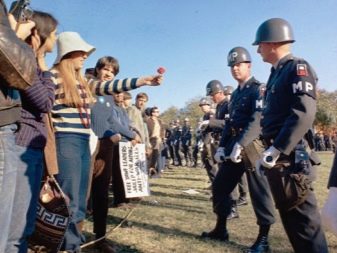

- Minibus. Small multi-seater cars of the Volkswagen brand were very popular for hippies - they were the means of transport with which the hippie commune could travel. Such cars could be recognized from afar - they were painted with bright colors, pacific symbols, colors and patterns.
The old minibus was a symbol of minimalism, which expressed the idea of being small and necessary for the life of an ordinary person.


- Mandala. The hippies were engaged in oriental spiritual practices that share philosophical ideas with them. Mandala is a colorful flower, looking at which you can meditate and achieve harmony with the universe, thereby increasing the level of personality development.
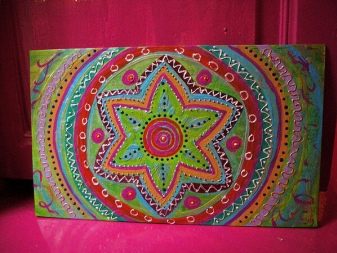

- Bauble bracelets. They were made by hand from multi-colored threads, beads, pieces of leather, laces. Each color on the bauble had its own meaning - putting on many multi-colored bracelets on the wrist, one could tell the world certain information.

Music is another essential feature of the hippie. John Lennon, an adherent of the subculture, wrote the world famous song "All you need is love", which perfectly reflects the hippie worldview. Besides the Beatles, Jim Morrison, Jimi Hendrix, Janis Joplin and others were popular among the pacifists.

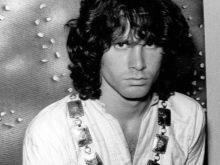
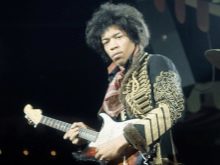
Lifestyle
People who chose the hippie lifestyle for themselves refused any situations where it seemed to them that there was an infringement of their freedom. They did not get hired jobs, did not obey social norms of morality and ethics, did not tolerate any hierarchy or rules. “Children of flowers,” as they called themselves, loved to get together, discuss their ideas, and be creative. They listened to music, sang, danced, and traveled.
Many communes supported the idea of brotherhood, as well as love for man and nature, therefore they rejected not only violence, but also smoking, drugs and alcohol.

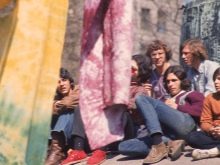

People saw the main meaning of unification with each other to receive joy and joint enjoyment of the beauty of nature. But there were negative aspects in this peace-loving structure as well. Young people living in the hippie environment were not accustomed to work, they did not receive education and proper upbringing.
Gradually, alcohol and drugs began to appear in the communes, and promiscuous relationships contributed to the birth of children, whose mothers did not even know the name of the child's father. This sexual and moral licentiousness has become the seamy side of hippie culture.
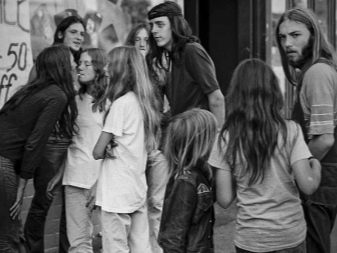
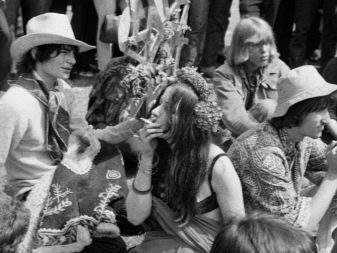
The living conditions of the "flower children" were harsh: the lack of a permanent place of residence and regular meals were considered minor difficulties.that were not worth paying attention to. In return, the hippies received freedom, joy and idleness. People got used to just being, hoping for happy accidents in their lives. A person could afford not to work, but only to contemplate the beauty of the world, living the carefree life of an eternal wanderer.
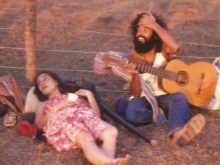

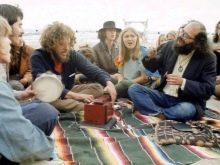
Young people decorated their long hair with flowers, meditated, listened to music, hitchhiked around the country and proclaimed the idea of peace. The basis of their existence was formed by the idea that a person should not fuss, he has the right to go about his business, while not interfering with the life of others.
The internal laws of the hippie community ordered members of the community to share with each other and perceive the interests of another person as their own.
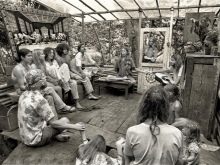


Subculture history
In the 60s and 70s of the last century, the hippie movement in the USSR also had its own reasons for its appearance, but this was expressed on a much more modest scale than in the United States. The hippie image became popular by the end of the 70s, when the youth of that era was en masse in the music of the Beatles., began to wear long hair and bell-bottomed trousers. But the strong Soviet outlook on life did not allow the subculture to gain a foothold during the era of stagnation.
In the USSR, hippies were considered worthless people with no shelter and no means of subsistence. However, they could be seen in every major city where young people gathered for "parties". For Moscow, such places were Gogolevsky Boulevard, Arbat, Pushkinskaya Square, Frunzensky Garden on Znamenka.
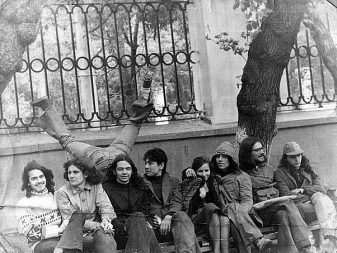

The hippies of the Soviet era were associated with those who were dissatisfied with the regime of the Communist Party, the ideology and system of the USSR. People who joined the hippies wanted to live outside the political structure of the state.
In the mass consciousness of the Soviet people, hippies were part of a Western ideology, hostile and incomprehensible. The lifestyle and appearance of the "children of flowers" could not be combined with the appearance of Soviet youth.

But the hippie movement did not go unnoticed for the USSR. Under the influence of this subculture, a sexual revolution took place in society, ethnic style became popular and fashionable, people learned what vegetarianism is. In addition, under the influence of pacifist views, young people got the opportunity to alternative military service, where it became permissible to repay a debt to the Motherland without taking up arms. Many modern artists in the past were adherents of the hippie style.
In our time, hippies have lost their popularity among the younger generation. In Russia, pacifists were replaced by other subcultures - the emergence of emo, as well as goths, punks. The world is changing rapidly, and people are changing along with it.


Features of the image
Despite the fact that the hippie subculture has lost its former popularity, some stylistic techniques in clothing, cosmetics or interiors have survived, which are still used today.
Some originals embody unforgettable hippie ideas for a wedding script, put on clothes and get nails done in this style.



clothing
Clothing style implies simplicity - in order to become its adherent, you need to have a special character. Girls and men look bright, complement their outfits or costumes with ethnic accessories. For example, a hippie wedding dress might be a regular white robe made from chintz or satin. Jeans can be worn under such a dress, which in this case looks quite appropriate.


People dress simply, emphasizing the unity with nature.
- Clothes are sewn from natural fabrics - linen, cotton, chintz, leather, denim, wool. The material should be pleasant to the touch and free from synthetic components.
- Combination of stylistics. There are no strict canons and laws for hippies, so clothes can combine several directions in one bow. In everything, individualism and creativity should be shown.
- Aged things. Hippies gravitate towards deliberate negligence and aging of things. The fashion for ripped jeans has its origins in this subculture. Such pants can be found in both the women's and men's collections of renowned manufacturers. Aged and frayed jeans have been at the forefront of fashion for several years now.
- The use of ethnic motives. Ethnic elements add a special flavor to the image, which can be used to decorate a skirt, shirt, jacket and even shoes.
Embroidery, pendants, inserts, overhead details - all this should be bright, colorful, expressive.




Hippie-style clothing implies bright variegation, imitating a floral carpet. To decorate clothes, they use bright circles, acid sprays, floral prints, decorative flowers, multi-tiered beads, monisto, bracelets and much more. As for footwear, preference is given to comfortable sandals, espadrilles, sneakers, clogs, sandals in bright colors.
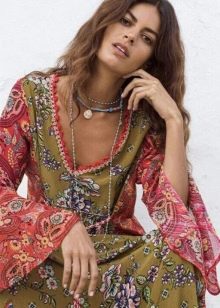


Makeup
When applying makeup, naturalness is encouraged, which is expressed in emphasizing the shine of the eyes and lips, as well as blush on the cheeks. Adherents of the style advocate naturalness, so the lack of makeup is another option for imitating hippies.
Well, for those who cannot imagine themselves without makeup, you can use bright shades of lipstick and expressive eye shadow colors.



Hairstyle
Men and women, being adherents of the hippie style, prefer long hair. Hairstyles from hair are acceptable, but they are simple and unpretentious:
- the hair is loose over the shoulders, and a special hoop is put on the forehead, which does not allow the strands to fall on the face;
- hair strands are collected in a ponytail using a leather cord;
- various options for weaving braids or dreadlocks.
To decorate your hairstyle, you can use fresh flowers, ribbons, headbands decorated with embroidery or beads. Hats and caps replace bandanas and headscarves.


Suitable accessories
Accessories make the appearance of hippies even more striking and attractive. For this purpose, pendants and pendants in the form of a pacific sign are used, girls put on jewelry woven of beads or beads, numerous bracelets or baubles on the wrists of hippies, and massive earrings adorn their ears.
The number of baubles on a hippie's hand can indicate the number of friends he has. The sign "pacific" is applied to bags, belts, it is painted on T-shirts or on the back of a jacket.


For jewelry, hippies use natural materials, making beads or a headband for hair out of them. Long hair is decorated with ribbons, beads, flowers. A cap can be worn on the head, tied from threads of the color of the rainbow.
A separate attribute that hippies love are sunglasses with colored lenses. This accessory is used to see the world in bright colors - it looks much better than it actually is.
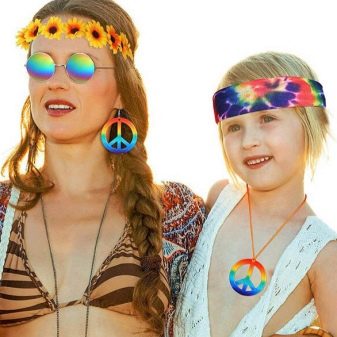

Room interior
Ease and a bright, joyful atmosphere are inherent in the apartment, where the hippie style is chosen as the design. To arrange a home, you do not need to purchase any expensive pieces of furniture at all - the interior is built on a combination of various furniture items that appeared spontaneously in the room. The main principle of the decor is simplicity and harmonious unity with nature. The room can combine things from different headsets or from different eras.
The main condition for the interior is that things complement each other and do not cause a feeling of rejection. Such a union is achieved with the help of the correct selection of colors.
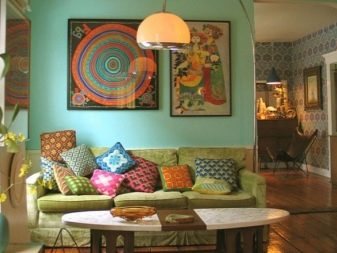

Bright spots on the walls or on the floor, floral patterns or colored ornaments will help to bring the whole composition together. In such a room, it is appropriate to put a carpet or woven path on the floor inviting you to take off your shoes and go barefoot. A hippie interior cannot be imagined without candles, a hookah, bright lampshades or fancy aroma lamps.
It is imperative to decorate the space with living plants, emphasizing the unity of man and nature.


Interesting Facts
The hippie subculture did not exist for long, but left an indelible memory of itself. One of the events was the Rainbow Gathering, famous in the USA. On Independence Day 1972, thousands of pacifists gathered in Colorado on Table Mountain and, holding hands, silently lifted them to the sun, saying "no" to all wars on the planet with this gesture.
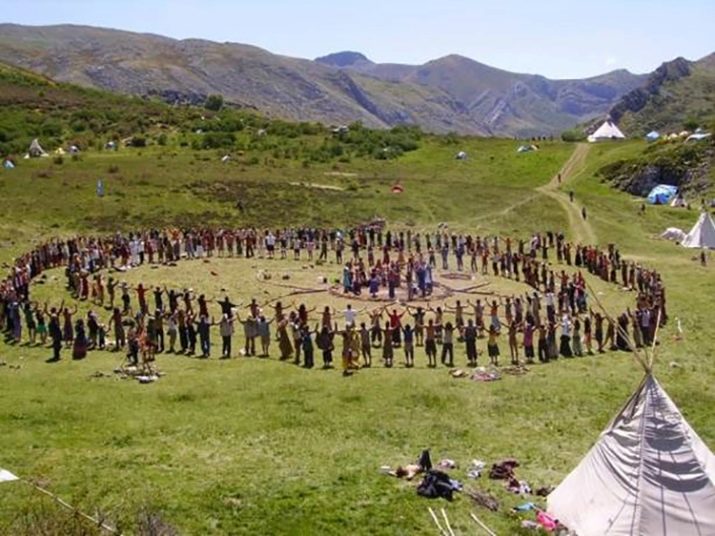
Hippies really appreciated nature, treated things sparingly, so that they would serve for many years. These guys were the first to actively advocate for the recycling of glass and plastic in order to clear the planet of debris. To support all life on the planet, hippies gave up meat food and food with preservatives, switching to eating vegetables - this is how the fashion for vegetarianism came to the world.
The culture and philosophy of hippies, despite all the negative aspects, influenced the lives of people all over the planet. Thanks to this movement, people, albeit temporarily, found the freedom they desired and conveyed to humanity the ideas of brotherhood, peace and respect for nature.


For who hippies are, see the next video.








